ECE Energy Series
UNECE’s work on sustainable energy is designed to improve access to affordable and clean energy for all and help reduce greenhouse gas emissions and the carbon footprint of the energy sector in the region. It promotes international policy dialogue and cooperation among governments, energy industries and other stakeholders. The focus is on energy efficiency, cleaner electricity production from fossil fuels, renewable energy, coal mine methane, natural gas, classification of energy and mineral reserves and resources, and energy security.

Compendium of Case Studies on Digitalization in Energy in the UNECE Region
This publication offers an exploration into examples of the transformative power of digital technologies within the energy sector across the UNECE member states and beyond. Aiming to cover the whole energy value chain, it showcases how digitalization is reshaping the energy landscape worldwide, driving efficiency and sustainability of the energy systems. From smart grids and energy management systems to predictive analytics and blockchain applications, the case studies discuss benefits and challenges of integrating digital technologies into energy systems and highlight lessons learned from such transformations. With contributions from leading experts in the area, this publication synthesizes insights from a range of contexts. It is designed to facilitate informed decision-making and to serve as a knowledge hub for stakeholders who seek to navigate the complexities of digital transformation in the energy sector in the UNECE region and beyond.
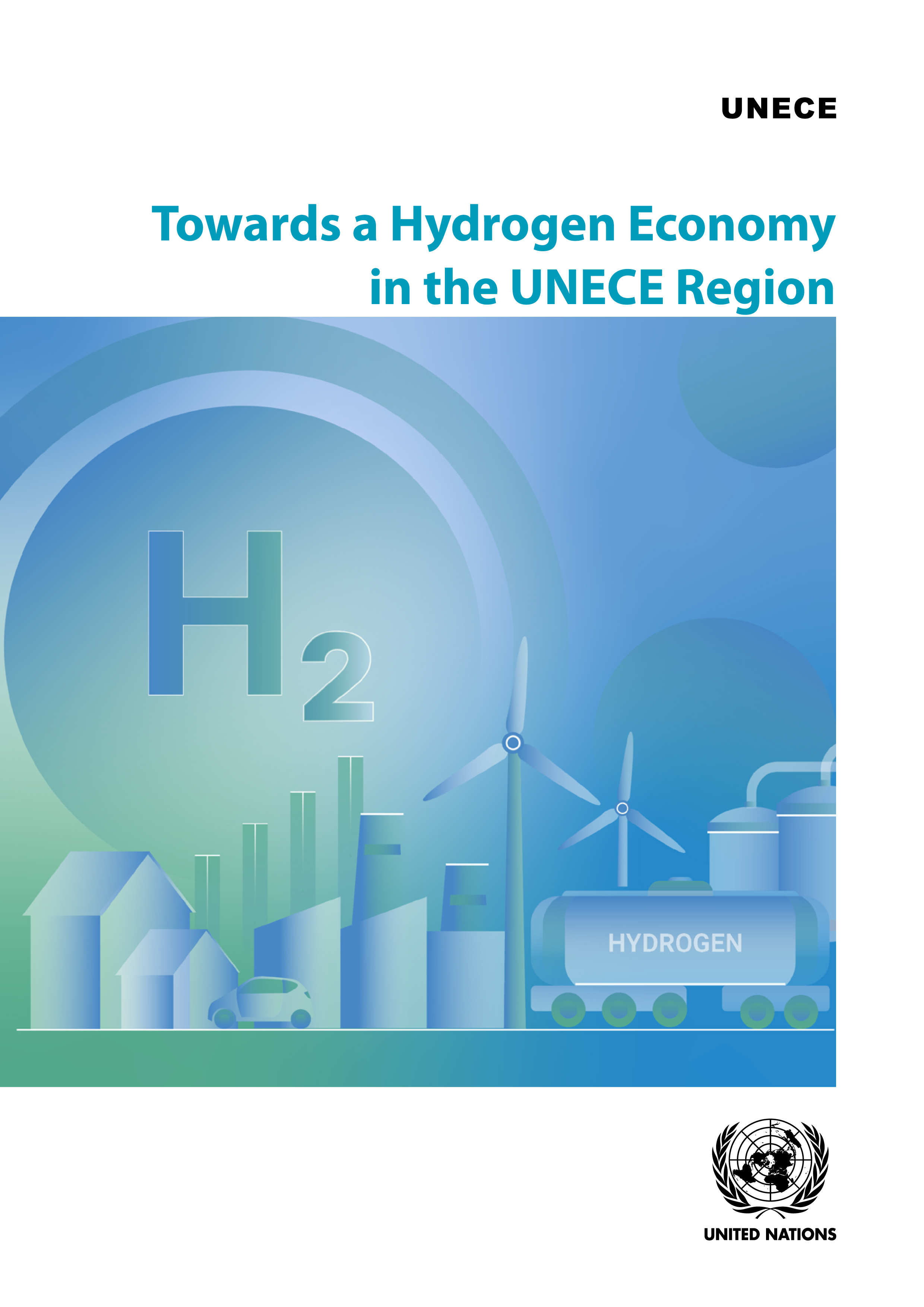
Towards a Hydrogen Economy in the UNECE Region
The publication proposes a method for hydrogen classification needed to jumpstart production and international trade in hydrogen. It also presents several project ideas in selected UNECE member States that would accelerate deployment of hydrogen.
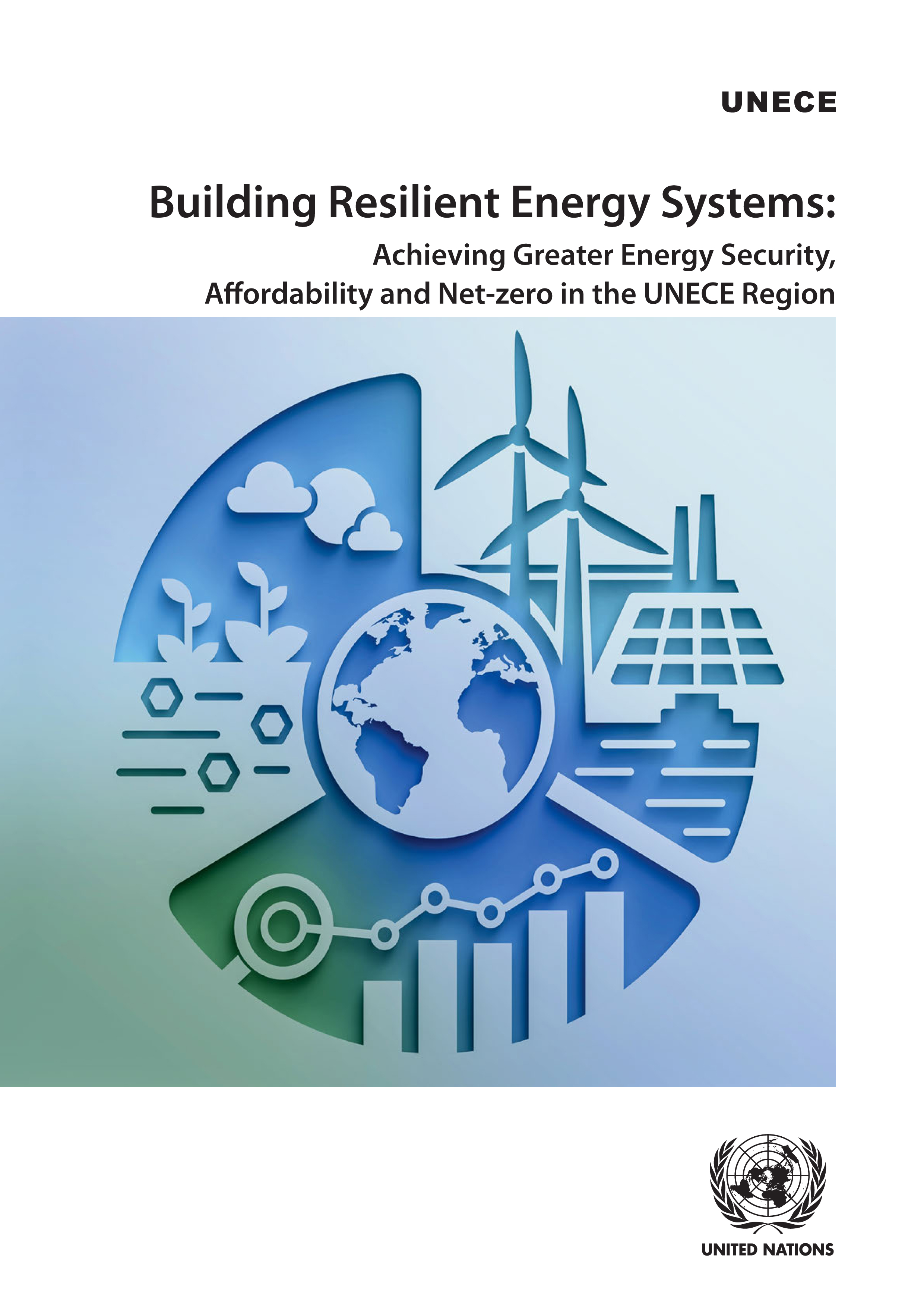
Building Resilient Energy Systems
Achieving Greater Energy Security, Affordability and Net-Zero in the UNECE Region
The ECE Region is at a crossroads and the time is NOW for Member States to put in place policies to drive action that will build a resilient energy system that acknowledges the need for affordable access to energy for quality of life and economic growth, minimizes the environmental impact of the system to create sustainability and meet carbon emission goals, while securing the supply necessary to support society’s needs. The Expert Groups under the UNECE’s Committee for Sustainable Energy (CSE) have collaborated to produce a technical roadmap to balance competing priorities in recognition of today’s very real climate, security, and affordability challenges. It respects Member States’ rights to make decisions that meet their own priorities and as such does not prescribe the specific path forward but lays out the technical considerations that are in critical need of balance at this point in time.
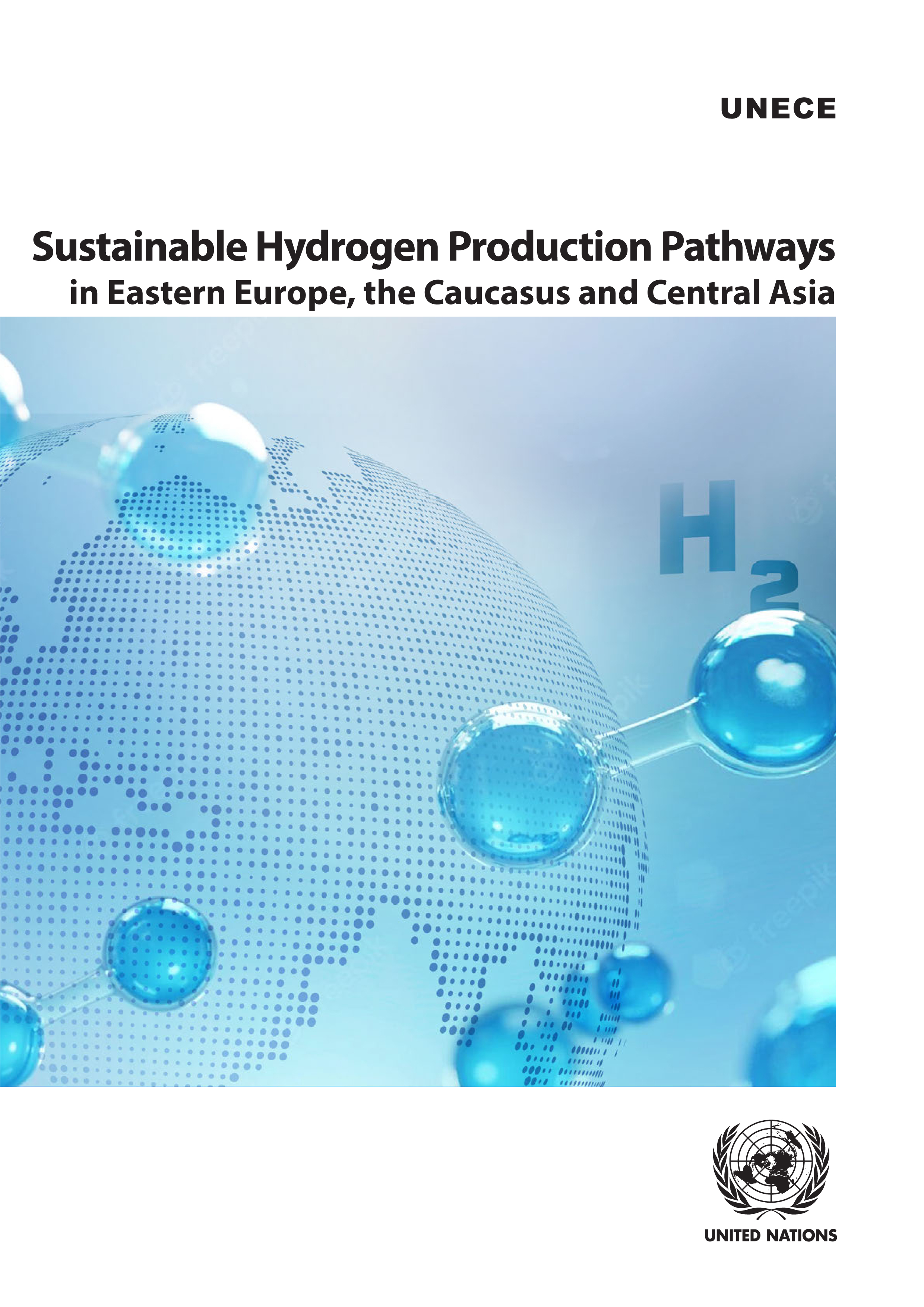
Sustainable Hydrogen Production Pathways in Eastern Europe, the Caucasus and Central Asia
Hydrogen is much talked about as an innovative solution to attain carbon neutrality and decarbonize hard-to-abate sectors. The UNECE project on sustainable hydrogen production pathways in CIS countries mobilizes policymakers and experts from the project beneficiary countries for an inclusive and transparent dialogue to advance sustainable hydrogen on agenda, raise awareness and discuss what does it take to jumpstart a hydrogen economy in Central Asia. According to this study, the potential production of low carbon hydrogen, in all considered countries, is about 3.4-13.2 Mt of hydrogen annually by 2040. The potential production varies widely within each country, reflecting uncertainties under both the minimum and maximum scenarios. The potential production values are determined by the presence of own reserves of natural gas and by the pace of renewable energy development. These elements are most present in the group of Caspian countries exporting natural gas (Azerbaijan, Turkmenistan) and in the group of Central Asian countries actively reforming their economies towards low-carbon development (Kazakhstan, Uzbekistan).
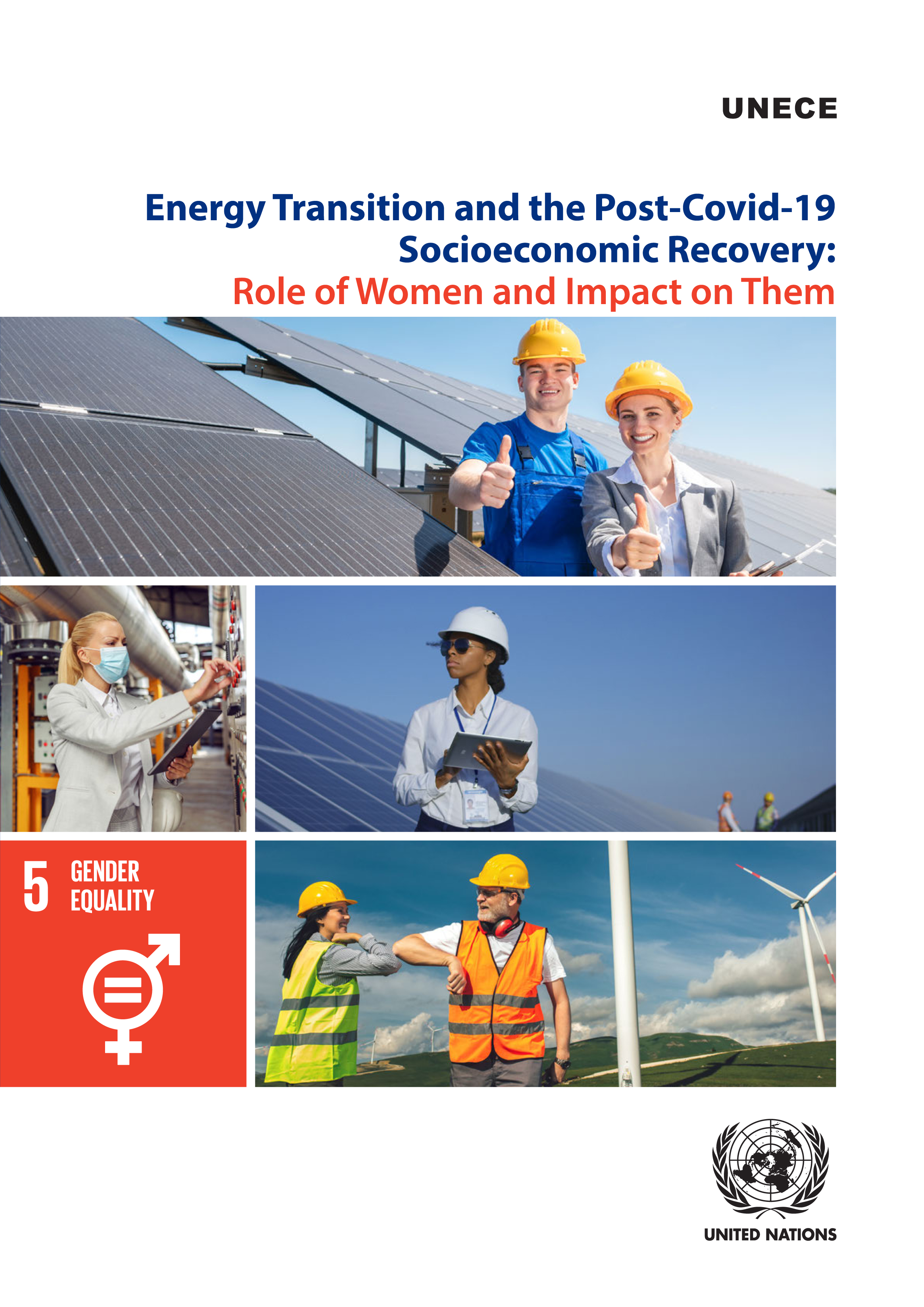
Energy Transition and the Post-COVID-19 Socioeconomic Recovery: Role of Women and Impact on Them
There are several pathways through which energy systems are transitioning to a decarbonized, sustainable economy. The development and implementation of these technologies are being driven by innovation in a wide variety of technologies. Now that most economies are emerging, governments are focused on driving a sustainable socioeconomic recovery from the COVID-19 pandemic, but there is an endemic issue which must be addressed. The energy sector is missing out on the experiences, skills, and talents of much of half the human population, which severely constrains the sustainable energy transition. In addition to a larger skilled workforce, there are several advantages in bridging the gender gap within the energy sector. Gender disparities in the energy sector have been observed around the world. Women are less represented in policymaking, corporate leadership and governance, as entrepreneurs and venture capitalists, and in the labour workforce. These barriers are surmountable using a two-way complementary approach, which is simultaneously bottom-up - action by women and society to bridge the gap of gender inequality in the energy sector – and top-down – government and policymakers need to develop policy tools to encourage women’s participation in the energy sector. This paper is summarising key findings from a report and empirical case studies of five United Nations Economic Commission for Europe (ECE) member States: Albania, Belarus, Ukraine, the United Kingdom, and Uzbekistan.
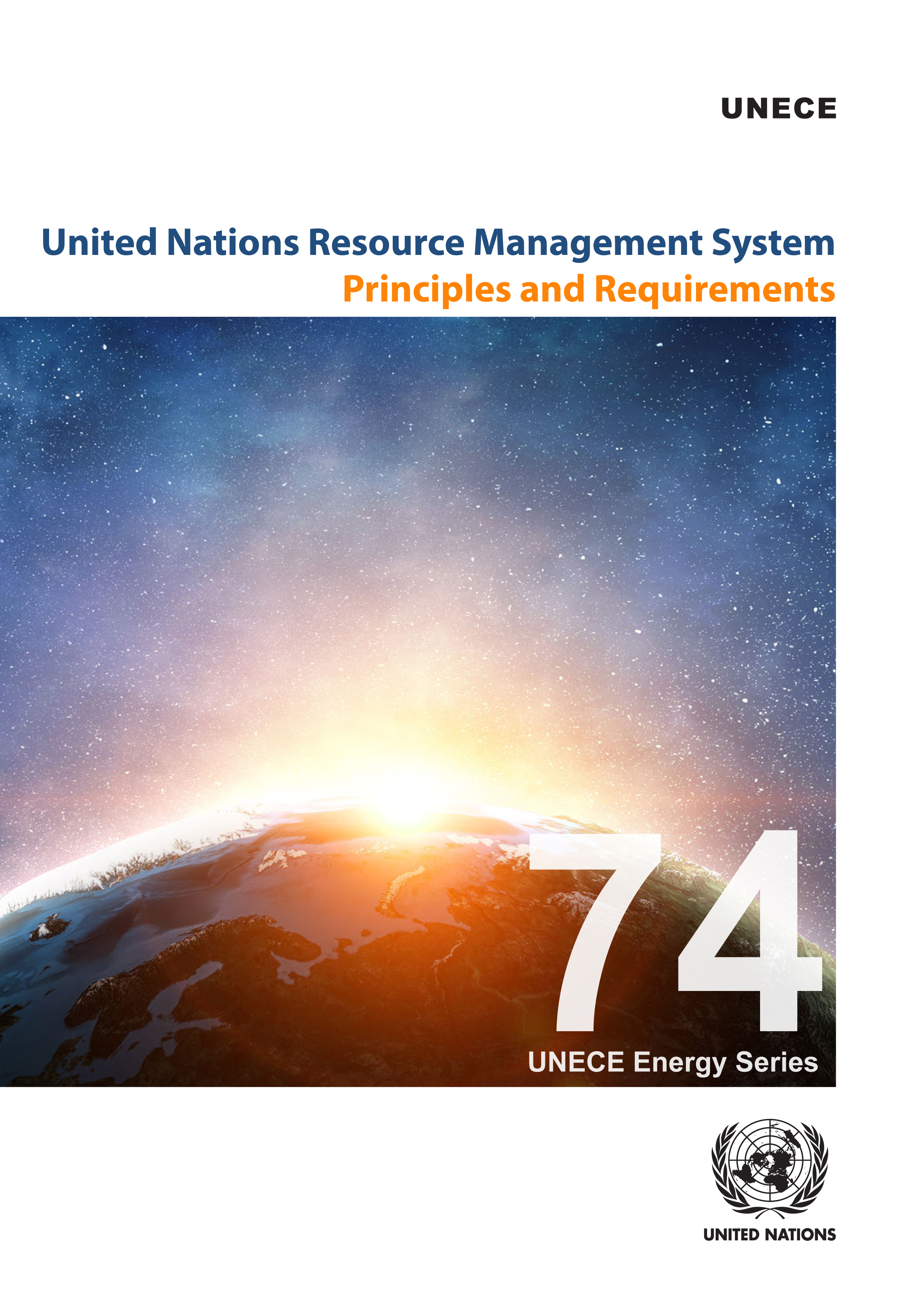
United Nations Resource Management System
Principles and Requirements
The multifaceted requirements of sustainable development depend on optimal and responsible production and use of natural resources. The United Nations Resource Management System (UNRMS) provides the framework for integrated and sustainable management of natural resources to promote good social, environmental and economic outcomes in alignment with the 2030 Agenda for Sustainable Development. UNRMS is based on the United Nations Framework Classification of Resources (UNFC) and provides a sustainable transition pathway for producing, using and reusing natural resources to become engines of sustainable development.

Carbon Neutrality Through Synergies Between Gas and Renewable Energy
The publication shows how gas provides affordably the required flexibility to enable the integration of higher shares of VRE in the energy mix. The publication enlarges the scope of the renewable energy concept to cover, not only renewable electricity, but also renewable gases. It contains two parts. The first focuses on the short term and the use of flexible, cost-competitive, and agile natural gas-fired generation as enabler of variable renewable energy (VRE) sources integration. This second part discusses phase is based on the hybrid energy system concept which envisages the use of new gases(renewable, decarbonised and low carbon), together with the sectoral integration concept, and other technologies (e.g. DSM, DER, CCS, etc.), as pillars to advance in VRE penetration while significantly reducing Green House Gas (GHG) emissions. The publication concludes with a number of recommendations aimed to guide UNECE member States in subsequently developing a coherent policy and regulatory frameworks to renewable energy across the region on a secure, competitive and resilient manner.
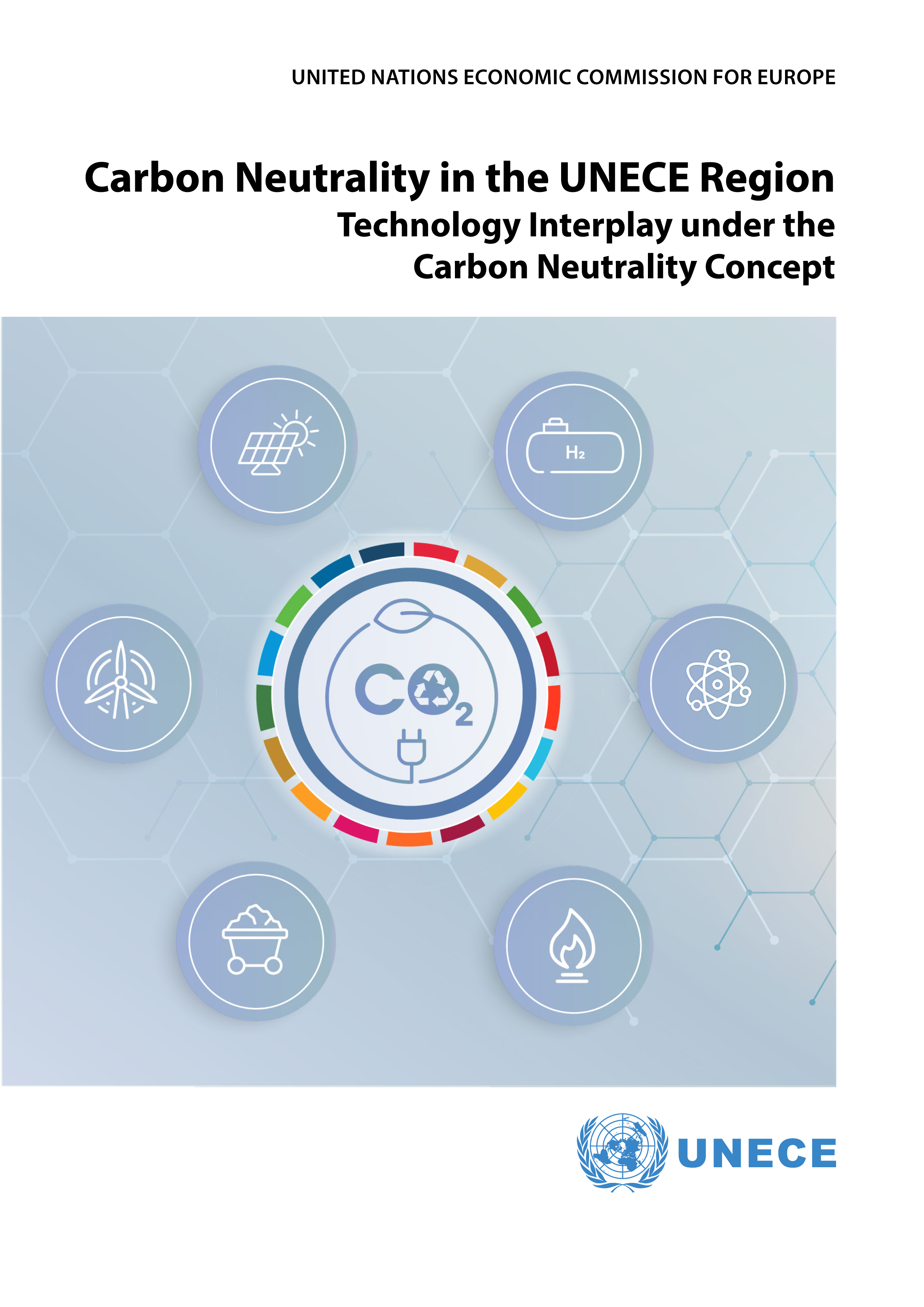
Carbon Neutrality in the UNECE Region: Technology Interplay under the Carbon Neutrality Concept
This publication calls for ambitious and bold action from governments, the private sector and regulators. Development of technologies will require new regulatory frameworks to support immediate commercialization. Policy frameworks should also incorporate legally binding commitments for increased international technology transfer, harmonized standards, and definitions for ‘green’ hydrogen, energy efficiency, and conservation. All decisions should be assessed against existing and upcoming net-zero and climate neutrality targets, with all energy infrastructure built to be net-zero compliant. Integrating innovative energy technologies, alongside the transformation of energy markets and downstream industries, is a challenge and an opportunity.
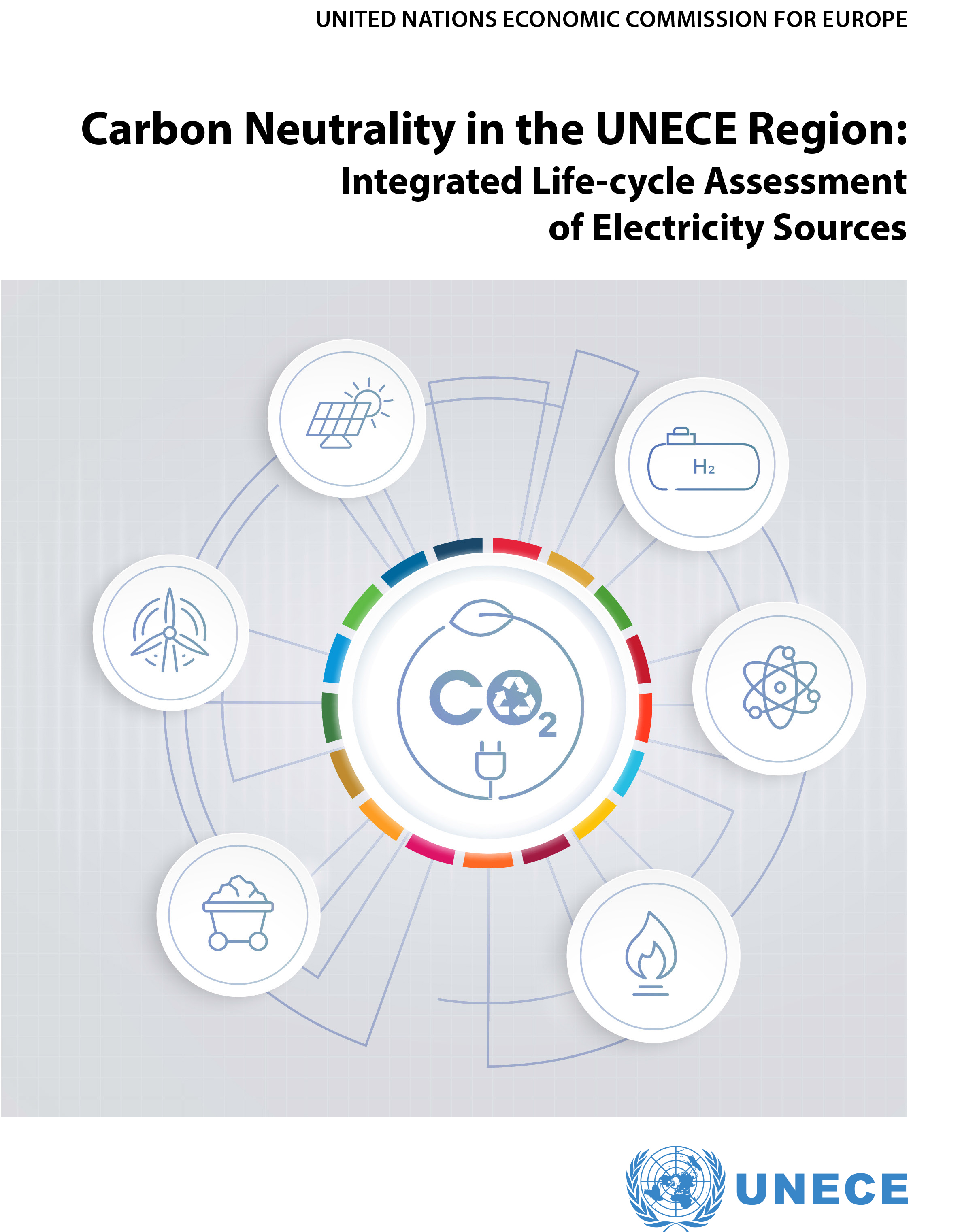
Carbon Neutrality in the UNECE Region: Integrated Life-cycle Assessment of Electricity Sources
Well-informed energy policy design is key to reaching decarbonization targets and keep global climate change under a 2°C threshold. In particular, low-carbon electricity provision for all is essential, as the IPCC shows that the most ambitious climate mitigation scenarios entail the electrification of most of our economy. Therefore, understanding the full scale of potential impacts from current and future electricity generation is required, in order to avoid “impact leakage”, i.e., increasing non-climate environmental pressure while reducing greenhouse gas emissions. Life cycle assessment allows the evaluation of a product over its life cycle, and across a wide range of environmental indicators – this method was chosen to report on the environmental profiles of various technologies. Candidate technologies assessed include coal, natural gas, hydropower, nuclear power, concentrated solar power (CSP), photovoltaics, and wind power. Twelve global regions included in the assessment, allowing to vary load factors, methane leakage rates, or background grid electricity consumption, among other factors. With no exception, every electricity generation technology generates environmental impacts over its life cycle; and these impacts may vary widely with implementation site and other design choices. Proper energy policy should consider site-specificity by conducting lifecycle assessments that consider local conditions and potential prospective changes.
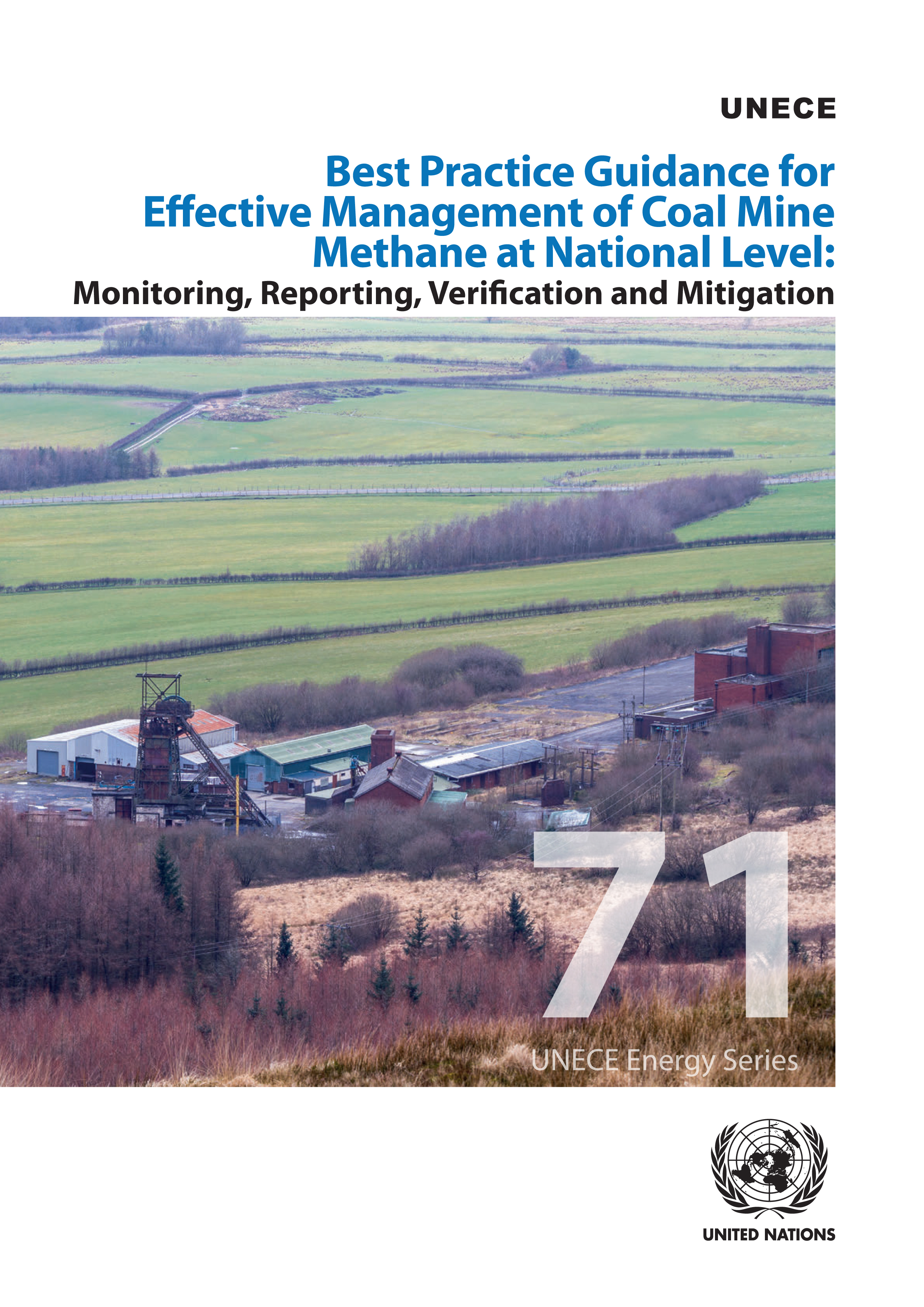
Best Practice Guidance for Effective Management of Coal Mine Methane at National Level
Monitoring, Reporting, Verification and Mitigation
While Methane (CH4) is the second most prevalent anthropogenic greenhouse gas (GHG) after carbon dioxide (CO2), the Global Warming Potential (GWP) of the former is 28-34 times higher than that of the latter. Coal mining is a major source of methane emissions, accounting for about 12% of global total anthropogenic emissions of that gas. Most emissions come from underground working mines, but those from abandoned mines are raising. Action on methane requires a solid understanding of emission sources at national, subnational, and local levels. Only with reliable emissions data, can policymakers design effective GHG policies, evaluate mitigation opportunities, and comply with their international climate commitments. National monitoring, reporting, and verification (MRV) programs can not only help countries better understand the contribution of coal mining to their overall methane and GHG emissions, but also identify opportunities for mitigation. In particular, MRV can help assess and track the effectiveness of the adopted climate policies. Setting up efficient MRV schemes is also important to deliver on international climate commitments in the context of the Paris Agreement.

Towards Sustainable Renewable Energy Investment and Deployment
Trade-offs and Opportunities With Water Resources and the Environment
This toolkit for renewable energy policy-makers and investors builds on the work already done by the United Nations Economic Commission for Europe (ECE) towards sustainably increasing renewable energy investments and improving cross-sectoral planning in decision-making processes. The Renewable Energy Hard Talk events held in Bosnia and Herzegovina (2018) and Serbia (2019) included a Nexus component for this purpose. Substantively, the approach used drew from the nexus assessment work under the ECE Water Convention and evolved into a list of criteria for sustainable renewable energy policies and investment initiatives that bring multiple benefits across sectors and countries while minimizing trade-offs, including with other water uses and environment protection.
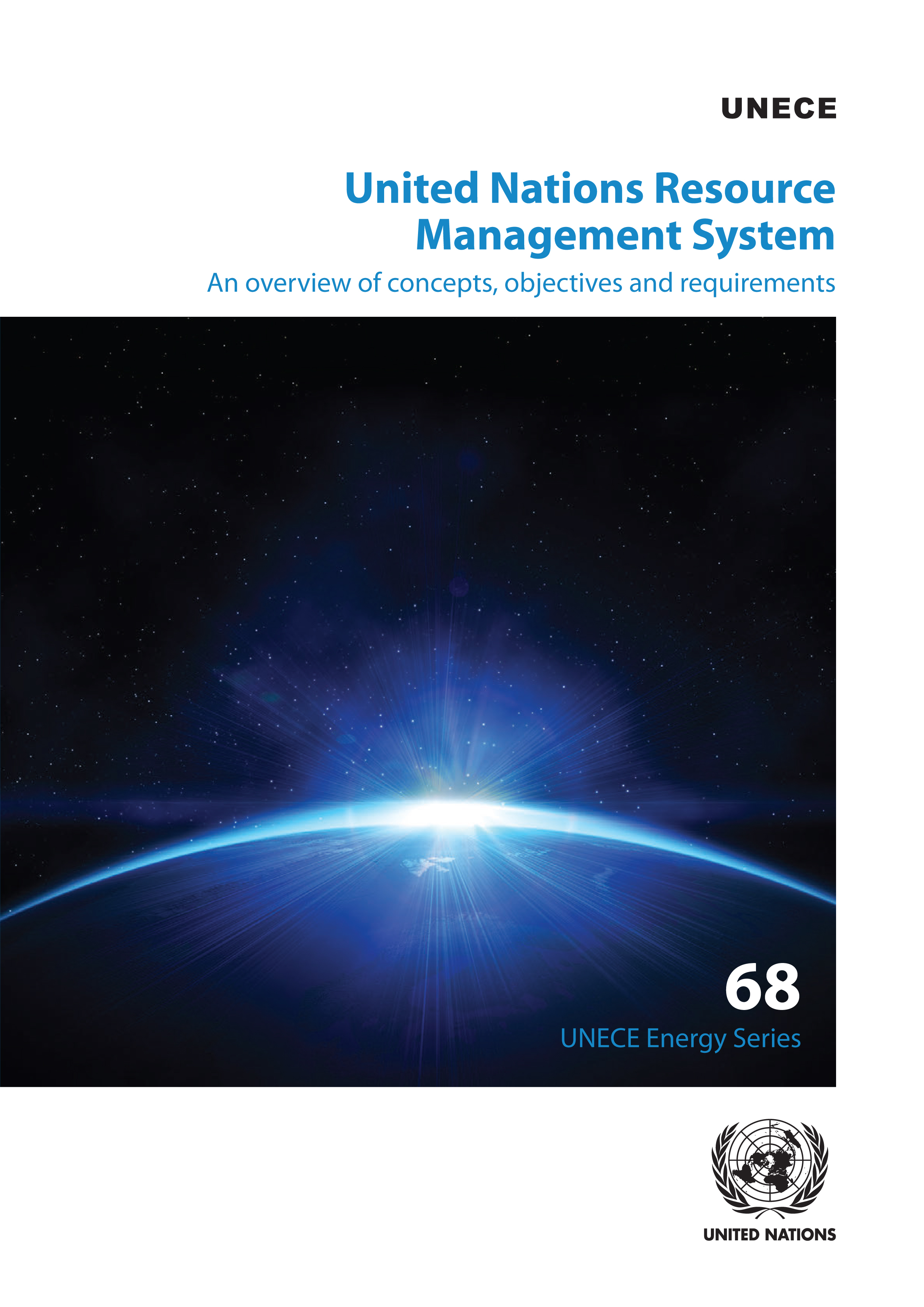
United Nations Resource Management System
An Overview of Concepts, Objectives and Requirements
The United Nations Resource Management System (UNRMS) is designed as a unifying framework for the integrated management of resources. UNRMS is based on the globally accepted United Nations Framework Classification for Resources (UNFC), which has incorporated a unique methodology of assessing resources through the triple lenses of environmental-social-economic viability, project feasibility and level of knowledge. It is a voluntary global standard for integrated resource management, within the framework of public, public-private and civil society partnerships, and is uniformly applicable to all resources.
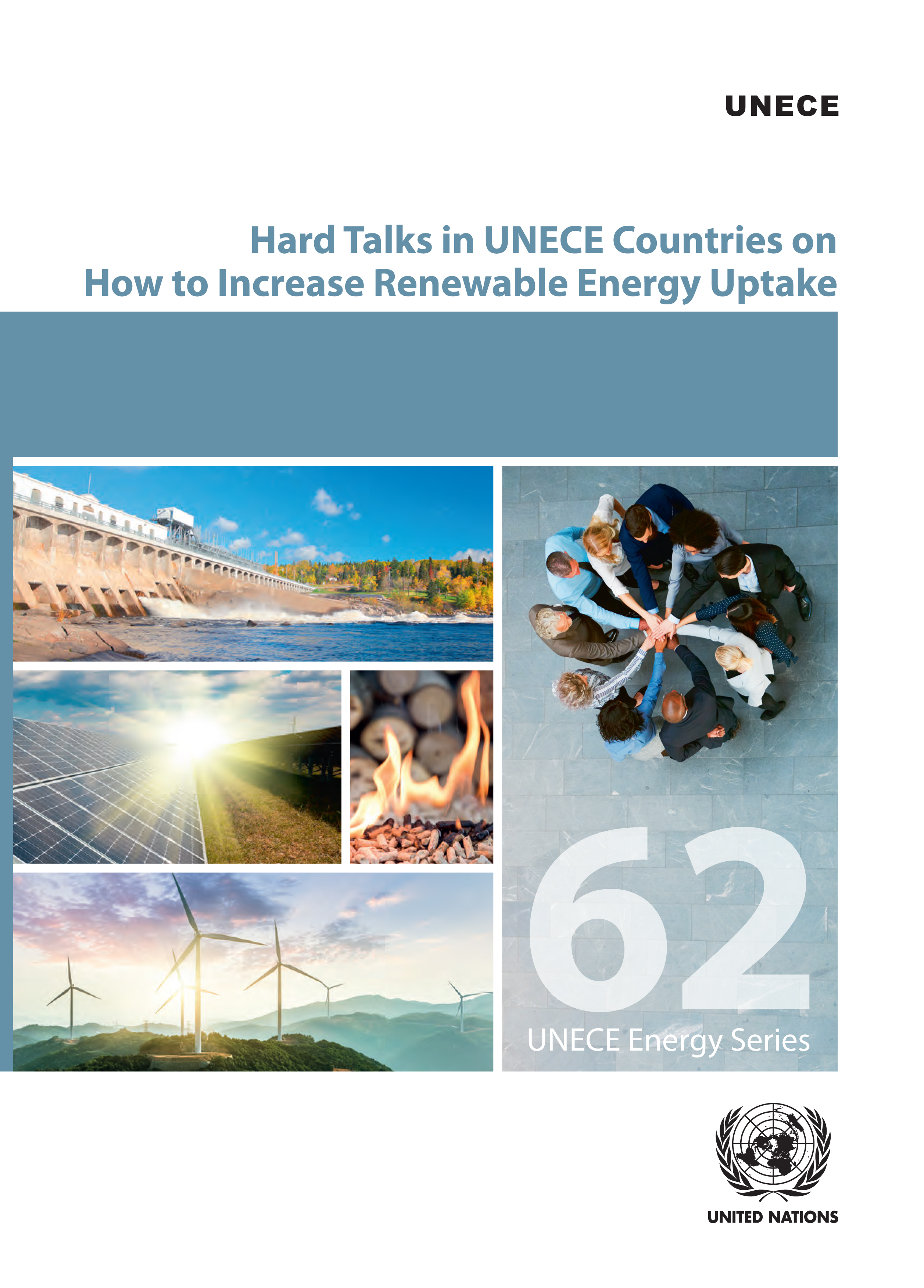
Hard Talks in UNECE Countries on How to Increase Renewable Energy Uptake
This publication presents an overview of a series of "Hard Talks" held in Azerbaijan, Bosnia and Herzegovina, Georgia, Kazakhstan, Serbia and Ukraine in 2016-2019, organized by UNECE. They promoted demand-driven debates held in each country on what is needed to change for the private sector to invest in sustainable energy and substantially increase the uptake of renewable energy. Information and data included in this report are extracted from the activities, which aimed to investigate barriers that hinder the full unfolding of renewable energy potential, and facilitated an open exchange between political decision makers, governmental officials, project developers, investors and technology providers.

Best Practice Guidance for Effective Methane Management in the Oil and Gas Sector
Monitoring, Reporting and Verification (MRV) and Mitigation
Oil and gas supplies will continue to play a key role in a future sustainable energy system to support economic growth and social progress, even under a scenario in which stringent climate policies and measures are implemented. At the same time, oil and gas industries are among the main sources of anthropogenic methane emissions. Methane is the primary component of natural gas, with some emitted to the atmosphere during its production, processing, storage, transmission, distribution, and use. Despite methane’s short residence time, the fact that it has a much higher warming potential than CO2 and that its atmospheric volumes are continuously replenished make effective methane management a potentially important element in countries’ climate change mitigation strategies. This document provides guidance for developing and implementing effective monitoring, reporting and verification (MRV) practices, as well as for mitigating methane emissions, from the oil and gas sector. In its discussion on MRV and mitigation opportunities, it is meant to serve as a resource for a broad audience, including owners and operators of oil and gas facilities and policymakers at all levels of government. It is intentionally “principles-based”, recognizing that conditions vary greatly across oil and gas facilities, and that legal, political and institutional aspects differ by jurisdictions.

Promoting Energy Efficiency Standards and Technologies to Enhance Energy Efficiency in Buildings
Considerable progress in energy efficiency in the building sector is reported in the majority of the UNECE member States, and still reaching the potential often falls short due to flawed policy frameworks, and lack of public awareness on available modern technologies and education on long-term economic and social benefits of energy efficiency improvement. This publication is prepared in response to the outlined challenges and aims to elucidate the status of implementation of energy efficiency standards in buildings and deployment of appropriate technologies, and to identify good policy practices and replicable solutions. It also proposes a set of general recommendations and priority actions arising from the analysis.

How Natural Gas can Support the Uptake of Renewable Energy
There is a strong medium-to-long-term future for gas so long as it wholeheartedly embraces the energy transition and partners with renewables to produce carbon-free products, notably hydrogen, whilst embracing carbon capture and storage (CCS). Gas has several key advantages. It is highly flexible and can be used for heating, cooling, cooking, waste disposal and transportation as well as feedstock for chemicals, fertilisers and pharmaceutical products. Moreover, throughout most of the UNECE area there are already extensive distribution networks that enable gas to be transferred both across borders and within member states. These network can be adapted to carry hydrogen either mixed in with natural gas or as self-contained systems. They can also be used to distribute CO2.
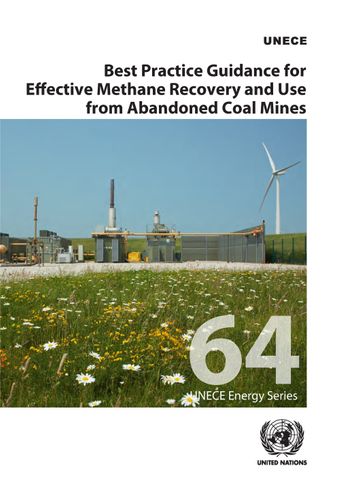
Best Practice Guidance for Effective Methane Recovery and Use from Abandoned Coal Mines
Coal production, transportation, storage and use account for roughly 40% of global greenhouse gas emissions. Methane, which is a potent greenhouse gas with a 100-year global warming potential 25 times that of carbon dioxide (CO2) and a 100-year global temperature potential 6-fold greater than CO2, once released from coal seams in which it is trapped creates number of problems even after cessation of mining activities. Following mine closure, methane emissions decrease, but do not stop completely. They initially decline, but can later stabilize and maintain a near-constant rate for an extended period of time. The document presents recommended principles and standards for effective methane recovery and use from abandoned coal mines in a clear and succinct way, providing decision-makers with a solid base of understanding from which to direct policy and commercial decisions. The Best Practice Guidance does not replace or supersede laws and regulations or other legally binding instruments, whether national or international. The principles outlined therein are intended to complement existing legal and regulatory frameworks and to support development of safer and more effective practices where industry practice and regulation continue to evolve. At the same time, being envisioned primarily as a tool to support performance- and principle-based regulatory programmes, the Best Practice Guidance can also complement more prescriptive regulation and support transition to performance-based regulation.
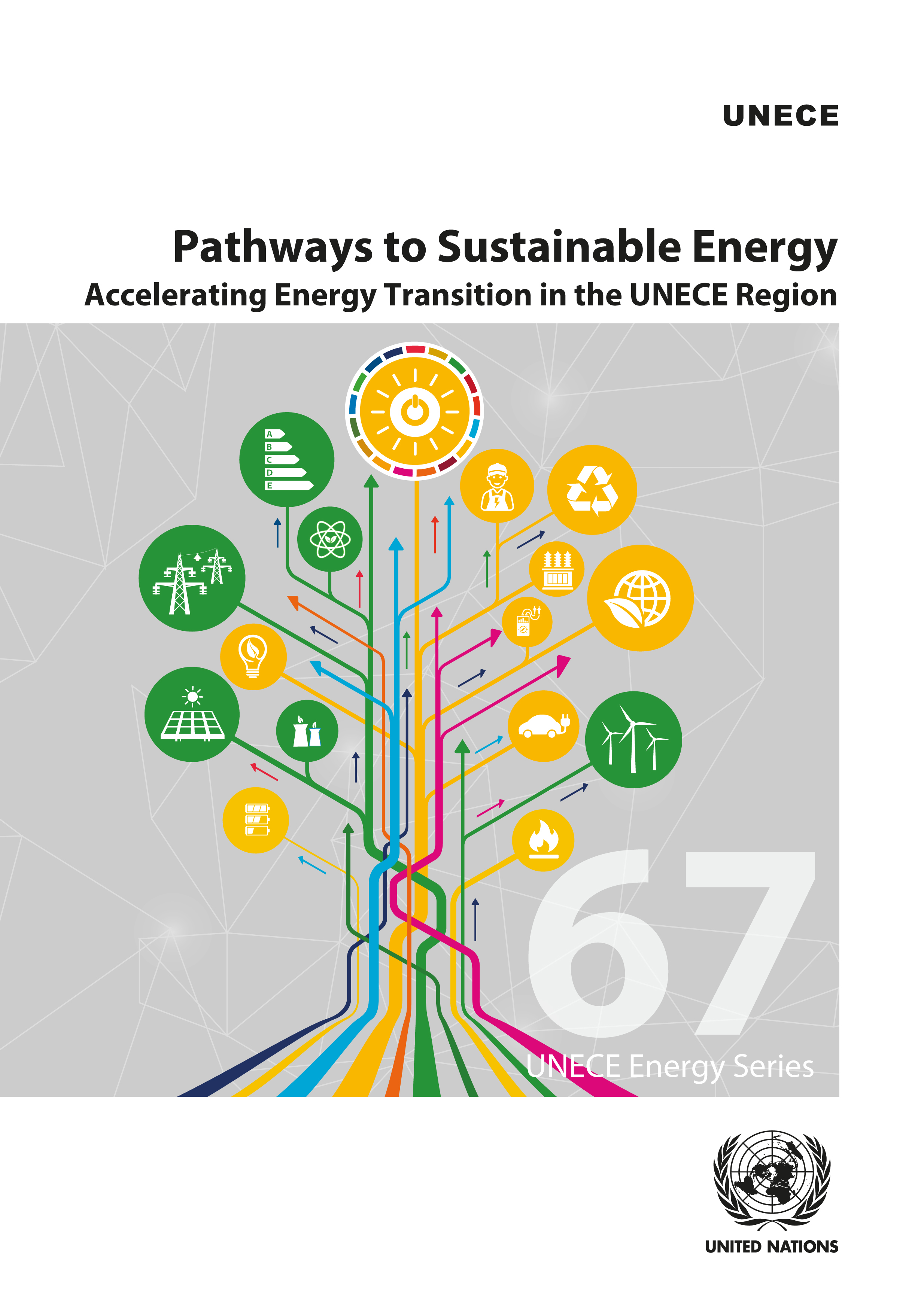
Pathways to Sustainable Energy
Accelerating Energy Transition in the UNECE Region
Energy underpins the development of economies and most of the goals and targets of the 2030 Agenda on Sustainable Development (2030 Agenda). The energy sector plays a critical role in finding solutions for both sustainable development and climate change mitigation. Since the universal agreement on the seventeen Sustainable Development Goals (SDGs) including the goal on sustainable energy SDG 7 in 2015, countries have commenced with the implementation of the 2030 Agenda. However, at this stage, there is a gap between the agreed energy and climate targets and the strategies and systems that are being put in place today to achieve them. Accelerated and more ambitious strategies and policies will be needed to fill the persistent gaps to achieve the 2030 Agenda, and in particular, energy will need to play an increasing role across various SDGs. If gaps are not addressed urgently, more drastic and expensive action will be required to avoid extreme and, potentially, unrecoverable adaptation measures. Currently, there are many different interpretations of what is “sustainable energy”. Countries in the region of the United Nations Economic Commission for Europe (ECE) have not yet agreed on a collective pathway to achieve energy for sustainable development. For the ECE region there is an important opportunity to explore the implications of different sustainable energy pathways and to work together on developing and deploying policies and measures to attain the 2030 Agenda. This is why the Committee on Sustainable Energy (the Committee) initiated this flagship project “Pathways to Sustainable Energy” (the project). The objective of the project is the development of strategies and actions to ensure the attainment of sustainable energy in the ECE region . The project’s goal is to strengthen the knowledge and capacities of countries to develop, implement and track national sustainable energy policies aligned with their commitments on climate change and sustainable development, and to understand the objectives and actions of other countries. The project aims to contribute concretely to climate change mitigation and sustainable development.
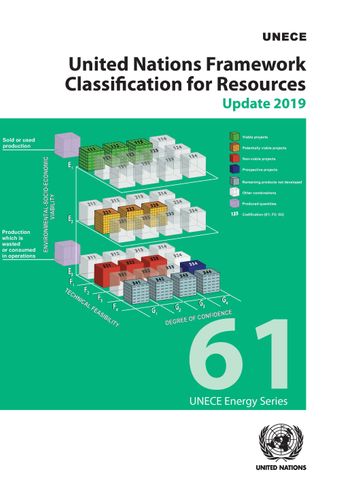
United Nations Framework Classification for Resources
Update 2019
The United Nations Framework Classification for Resources (UNFC) is a global classification and management system applicable to mineral, petroleum, nuclear fuel, renewable energy and anthropogenic resources, as well as injection projects for geological storage. Since the adoption of the Sustainable Development Goals (SDGs), managing energy and raw material resources in a sustainable manner has become paramount to all stakeholders including governments, industry, investors and communities. This updated version of UNFC is intended to satisfy the requirements of different resource sectors and applications, as well as making it fully aligned to the sustainable resource management called for by the 2030 Agenda for Sustainable Development. The key changes, including the normalization of the text, make UNFC applicable for all resources.
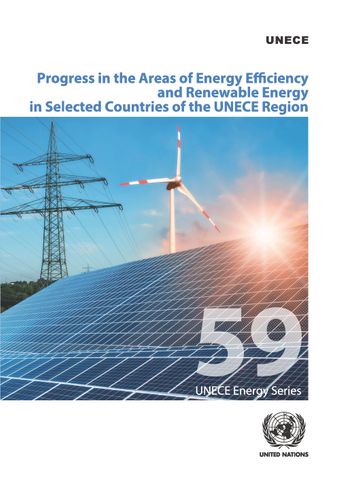
Progress in the Areas of Energy Efficiency and Renewable Energy in Selected Countries of the UNECE Region
This publication explores the progress in energy efficiency and renewable energy in selected countries of South-Eastern Europe, Eastern Europe, and Central Asia, and in the Russian Federation. The study analyzes policy, legislative and regulatory frameworks, financial environment and level of awareness in the areas of energy efficiency and renewable energy from 2010 to the present. It also identifies the existing gaps at the required frameworks and environment to promote energy efficiency and renewable energy investments in the countries. This study is intended to support countries in their ongoing efforts towards improving energy efficiency and building a strong renewable energy base. It proposes a set of recommendations for necessary steps in achieving the long-term objectives for energy mix and meeting the ambitious related targets set by the countries.
